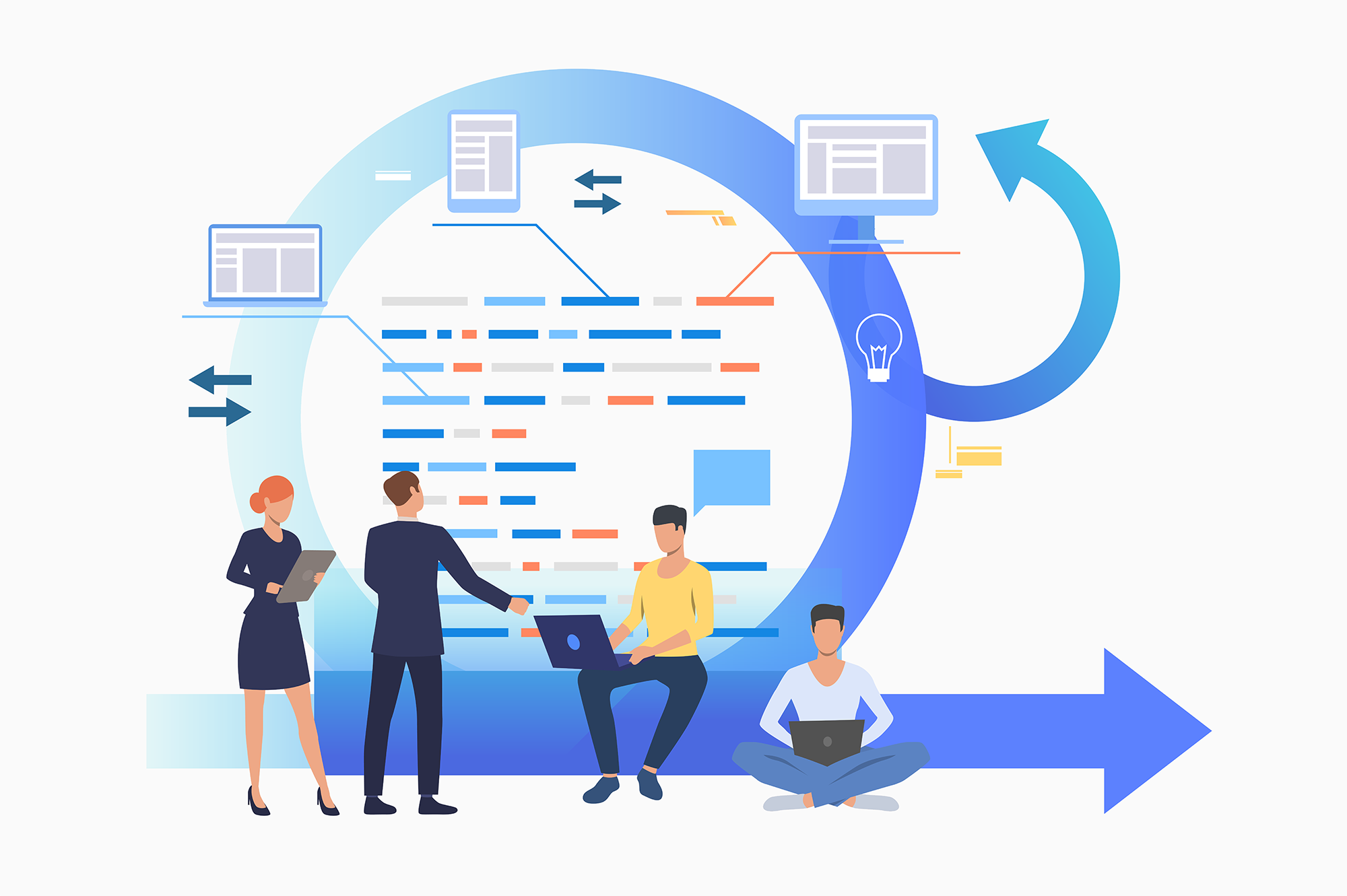What Is Full Cycle Recruiting?
© SurfupVector / Adobe Stock
Full cycle recruiting, also called life-cycle recruiting, is a recruiting strategy that covers every step of the talent acquisition process, from determining a title and job description to onboarding your new employee.
Some businesses manage their own recruiting life-cycle, while others outsource theirs to an organization like Skywalk Group. Still other organizations will outsource parts of the recruiting strategy and keep other pieces in-house.
Full cycle recruiting tends to encompass between 5 and 7 steps, depending on who you ask. We define the steps involved as: Preparing, Sourcing, Screening, Offer, and Onboarding.
Download the infographic here!
Preparing
Before you start looking for someone to hire, you need to figure out what role to hire for! During the preparation step you should determine title, salary, job duties, who the role reports to, and what experience and education the optimum candidate should have.
This stage is the first one where many hiring managers realize they may need outside help with all or part of the full cycle process. It could be because they are too swamped with other duties, they have little or no experience in recruiting for this type of role, or because they have strict budgetary constraints and need the most cost-effective solution possible. Bringing in a recruiting partner to help narrow down what you're looking for can help with all of these challenges.
Sourcing
Once you have determined what you are looking for, you can start sourcing candidates for your position. Sourcing well is a matter of communication, experience, and resources.
The best sourcing experts have a lot of experience finding passive candidates, and they communicate well with both the candidate and the client, passing along expectations and concerns promptly. These experts also have access to platforms and resources that other professionals may not have, such as a network of other recruiting colleagues, and specific sourcing tools and techniques.
Screening
Screening candidates is a group effort and should include at least a phone screen to gauge and promote interest, followed by a phone interview, and then a formal in-person or virtual interview. Be careful adding too many hoops for candidates to jump through, you might find many abandon the process if it becomes long and drawn out.
Now you get to weed out the candidates that do not fit the criteria you and your team decided on during the Preparation step. It’s important during both the sourcing and screening processes to be aware of implicit or unconscious biases and make every attempt to extend equal opportunity to candidates of all backgrounds. It can actually improve your business to hire diverse candidates with backgrounds, experience, or personalities that your organization doesn’t currently have! This is called hiring for culture add, and you can read more about it here.
Offer
You’ve found the perfect candidate for your open position and you want to extend them an offer. This is fabulous news, though your work isn’t quite done. You need to consider the salary range expressed in your job ads and make sure to offer a salary and benefits package that is fair and equitable. Now prepare for negotiation!
It’s very possible you may not come to an agreement with your first candidate. They may receive a better offer elsewhere, or have a myriad of other concerns that cause them to drop out of consideration. This is why building a strong pipeline of qualified candidates is so important! A good recruiting partner won’t have any issues not only building you a pipeline of great candidates, but also giving you access to those candidates if you require it.
Onboarding & Candidate Experience
Negotiations are complete and your candidate has accepted the offer and benefits package, but your recruiting cycle isn’t quite finished. Onboarding is considered part of the recruiting process because the impression new hires receive of your organization is extremely important and can influence future candidates to either apply to, or steer clear of, your business.
The impression the candidate forms of your business is called the “candidate experience”, and it starts from the minute they first interact with your company. That first interaction could be as simple as seeing an ad for your job posting, filling out an application, or being contacted by a member of your recruiting team. Timely interaction, prompt follow-up, and the overall management of the candidate experience is very important when competing for talent.
Recruiting is a complex, labor intensive cycle that includes multiple steps and procedures, but it doesn’t have to be stressful. If you or your organization is struggling, you have the option of outsourcing some of that stress to a partner like Skywalk Group! Contact us today to learn how we can create an on-demand, customized plan for your specific needs.
By Jessica Palmer

